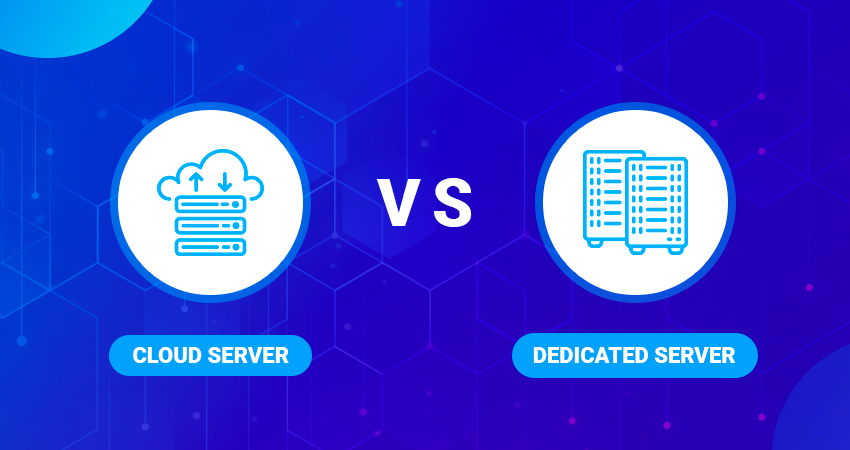-
-
- English
- العربية
- Español
- Français
- Dutch
-
-
Book a Demo
-
Book a Demo
Fabulix Service Manage (FSM)
-
-
الشركة
-
GLOBAL
About ISSQUARED -
IN INDIA
ISSQUARED
-
-
الشركاء
-
IN INDIA
ISSQUARED -
Global Partner Network
Partner Program
-
-
الوظائف
-
نحن نبحث باستمرار عن الأفراد الموهوبين الذين لديهم شغف بالتقنيات المبتكرة
-
-
الرؤى
-
هل أنت جاهز لمعرفة المزيد حول Identity and Access Management (IAG) الآن؟
شاهد الفيديو الخاص بنا عند الطلب حول كيفية إدارة الهوية في مؤسسة نموذجية.
-
-
القطاعات الصناعية
-
-
الحلول
-
-
المنتجات
-
احصل على عرض توضيحي مخصص
-
-
الأعمال
-

9 Benefits of Automation in Service Management
ITIL, Service Management - March 04, 2022
Introduction
Does your organization take advantage of “automation for IT Service Management” to unleash extended capabilities for your service desk? Is your IT department searching for a feature-rich, future-ready way to deliver critical IT services amidst increasing employee expectations, digital transformation trends, technology upgrades, and a competitive business landscape?
No matter what your end goal, this blog is tailored to address your organization’s high-end Service Management automation needs and highlights the major benefits of automation for Service Management that are multifaceted.
Automation for IT Service Management has triggered business modernization, simplification, and digital transformation across the business landscape. Increasingly, businesses are pushing to introduce automation in human-centric processes which allows them to augment IT efficiency and customer satisfaction by improving service quality and the customer experience.
Your IT department can leverage automation for Service Management in order to streamline workflow and enhance IT efficiency while simplifying business processes. In addition, it helps save time, reduce costs of business management and technical services, and minimize repetitive tasks to help your teams prioritize higher-value business operations that accentuates productivity.
Let’s look at the top 9 ways in which automation for Service Management can transform your business:

1. Streamline employee onboarding
Service Management automation can help organizations add value when onboarding new resources and personnel. A new resource requires access to various internal IT systems and resources specific to his or her department as well as the organization in general. Rather than having the hiring manager or the resource reach out to the IT department directly, companies can automate the access request to be addressed automatically.
In the past, a new resource would need to raise an access request through a traditional IT service management system; now, the Service Management triggers an automatic notification for their HRM with instructions to request specific access for the new employee.
Your organization can analyze the data and assess the automation system of the Service Management tool frequently to look for improvements and adjustments. Such a dedicated assessment program helps Service Management teams ensure seamless automation workflow that scales and transforms with the business requirements.
2. Improve problem and incident management processes
Service Management automation systems help simplify, streamline, and strengthen problem management practices and eliminate incidents, defects, and redundancies.
Individuals who are accountable for both problem management incident management can be bogged down by handling multiple incidents, mainly due to considerable amount of time being spent in investigations and analysis as required for effective problem management.
With Service Management automation, companies are provided with insights into problem and incident management and equipped with tools and support that allow them to efficiently resolve incidents and problems. Additionally, this solution helps you implement both short-term and long-term solutions and free up resources for high-value tasks.
3. Improve customer satisfaction and experience
Automation for Service Management has largest effect on customer satisfaction and business operations. Improving customer and client service is the end-game of Service Management automation as nearly every department outside the IT perimeter rely heavily on some level of automation services.
Service Management automation equips companies to deliver a faster, efficient, and higher quality experience. It is a robust combination – delivering services in line with the customer needs and delivering them quickly. Service Management automation achieves this goal as it connects the back and front office for a seamless workflow.
An example of Service Management automation can be seen when organizations automate their IT processes for repetitive tasks like access request, password reset, or other repetitive task automation.
4. Improve service desk efficiency
In general, applying automation to any aspect of a technology or business operations will magnify the efficiency of an existing operation. This applies exactly to Service Management automation as well.
Automation for Service Management amplifies the productivity efficiency of the service desk. By eliminating protracted conversations, IT staff can focus on more important tasks rather utilize that time to resolve the incident and focus on the root cause to eliminate repetitive occurrence. Service Management automation can improve the efficiency of a service desk by up to 30 percent and save the organization a significant amount of operating costs. With simplified administration, improved self-service capabilities, and a reduced number of repetitive tasks, automation for Service Management can provide clarity to an overworked general-service desk, thereby helping your service teams to stay on track.
5. Automate cloud processes
Many organizations deal with customers and clients who work on public or private cloud-based resources provided by Service Management tools. Most often they automate provisioning with an end-user portal where developers, engineers, and customers can access automatically provisioned resources within any public or private cloud platform.
Along with executing this, they can tick all boxes required for standardized Service Management processes including change and request management. This should be deployed so that - when and if audits are done – you can verify that all-important steps as per a governance standpoint have been followed.
It is important that you prove the accuracy of those metrics as a success standpoint to mitigate the risks for your customers. With Service Management automation’s GRC governance, risk, and compliance cover, businesses can ensure compliance whenever something is provisioned including provisioning a new service or justifing a burst in the capacity.
6. Collect user feedback more efficiently
The ability to gather anonymous customer feedback, either from those who submit tickets or those who resolve them, can assist businesses in bridging the gaps between what should be done and what can be done.
Service Management automation simplifies the way you collect suggested changes, feedback, and opinions regarding different business processes without holding time-consuming conversations. As an alternatvie, automation can be used to trigger a short survey at the end of each interaction to understand what processes can prove overly cumbersome and what areas you can streamline.
7. Automate IT helpdesk ticketing systems
One of the most important functions of Service Management is to bring automation into the incident and IT helpdesk ticketing processes. With Service Management automation tools you can quickly and easily apply relevant incident escalation, ticket categorization, issue updates, etc. In addition, IT helpdesks get the privilege to resolve tickets automatically with runbook automation scripts.
The confluence of Service Management and automation significantly decreases the labor and man-hours associated with incident identification, categorization, assignment, and triage while enabling IT teams to focus more on priority aspects such as planned change implementation, root cause remedy, and problem resolution. For examle, a monitoring tool detects a slow app that has violated its performance KPI thresholds at 3 am on Sunday, triggering the Service Management automation utility to raise a ticket, evaluate application status, and either suppress or auto-resolve the ticket, rather than escalating the alert.
In such an event, the automation toolkit can resolve issues without troubling the IT staff on a weekend, late-night, or early morning.
8. Automate Service Management workflow
Much of what an Service Management tool automates are the most simple, redundant, mundane, and repetitive tasks. These tools rarely deliver clearly visible cost-cutting, but it is imperative to understand what your organization can achieve from employees who get more time to work on creative, complex, and high-value projects than executing repetitive tasks. As companies become more accustomed to low-level automation tools, they can more readily embrace newer, high-end automation technologies.
Automation is classified in three major categories: automation of outbound functions, automation of inbound actions, and automation within the Service Management tool itself.
-
“Automation of inbound actions” includes incident and ticketing to report and detect minor issues such as low disk space.
-
“Within Service Management Automation” includes assigning SLAs automatically based on priorities, customers, and contracts, assigning specific workflow responsibilities to appropriate users, groups, etc.
-
“Automation of outgoing functions” includes extending the applicable knowledge to individuals who log in to the system, going a step ahead of simple keyword search.
9. Accelerate change management processes
While new strategies and systems are critical to allow the business to evolve and be more competitive, it might cause service disruption if an efficient change management approach is not in place. In order to facilitate a seamless automated change management model, many businesses use the ITIL framework. ITIL provides a continuous, standardized set of best practices and terminology for defining the systems and processes to be automated.
Using automated change management aspect of ITIL, organizations can establish the best practices for change management while implementing an automation toolkit for approval, calculation of impact, business calendar impact, impact of change on all other change requests. In doing so, they can decrease the time it takes to act on requests for change and improve efficiency by reducing the costs associated with change management.
About ISSQUARED
ISSQUARED, Inc. is one of the potential automated Service Management solutions and services provider to startups, SMBs, and enterprises worldwide.
With an exquisite range of agile, unified Service Management toolsets and automation implementation services, ISSQUARED helps simplify, improve, accelerate, and modernize critical business processes such as incident management, employee onboarding, service desk, change management, cloud processes, Service Management workflow, and more.
Over the years, ISSQUARED has helped hundreds of businesses to streamline workflow, reduce operational costs, improve business efficiency, boost employee morale, augment customer experience, and generate more returns on their investments.
Connect with us to discover how the powerful, feature-rich Service Management toolsets with automation capabilities and implementation services by ISSQUARED can transform the way your business performs.
Categories
-
Cloud
-
Carrier and UC
-
Cyber Security
-
Edge Computing
-
Hyper-convergence
-
Identity Management
-
ITIL , Service Management
-
Risk and Compliance
-
Partners
-
Others
recent blogs

The Importance of IAM in the Context of the COVID-19 Pandemic
July 11, 2022

Building a Roadmap for IT Security Management
June 10, 2022

Why is IT Service Management Still Relevant Today?
April 29, 2022

Can We Achieve Zero Trust?
April 18, 2022

How to Identify the Behavior of Cyber Adversaries?
April 08, 2022

Switching to A Modern, Intelligent IT Service Management
April 01, 2022

IT Operations Management and IT Service Management | How They Differ, Combine and Why They Matter
March 25, 2022

What is Software-Defined Networking (SDN)?
March 14, 2022

Choosing an IT Service Management Service
March 08, 2022

9 Benefits of Automation in Service Management
March 04, 2022

Social Engineering and How to Safeguard Yourself
March 02, 2022

AWS Network Firewall Versus Azure Firewall: An Overview and Key Features
Feb 25, 2022
Importance of Attack Surface and Threat Intelligence
February 22, 2022

Pros and Cons of Artificial Intelligence in Cybersecurity
March 10, 2021

Cloud Infrastructure and the Pandemic- A shining light
June 1st, 2020

Identity Management as a Service
Aug 18, 2020

Cloud Hosting vs Dedicated Servers
April 06, 2020

The Impact of AI on the Finance Industry
February 5, 2021

Brainjacking - Moving from Science Fiction to Reality and Associated risks
March 11, 2021

Ecommerce: Impact of Amazon and Artificial Intelligence
February 1, 2021

Zoom, Skype, Teams: The battle for market domination in the times of COVID-19.
April 10, 2020

Microsoft Azure Reserved Virtual Machine Instances (RI's) - Key Features and Benefits
March 24, 2020
Tags
Subscribe to newsletter

By: Ganesh Ramaiah
Senior Vice President - International Operations
Ganesh’s emphasis on quality and delivery has been a consistent theme as he led teams at UBS,
CSC, Microsoft, and IBM. His vast experience includes managing staff of thousands of global
delivery engineers for Fortune 100 companies’ IT operations.
Ganesh holds Bachelor’s and Master’s Degrees in Physics with special emphasis in Electronics
from Delhi University.